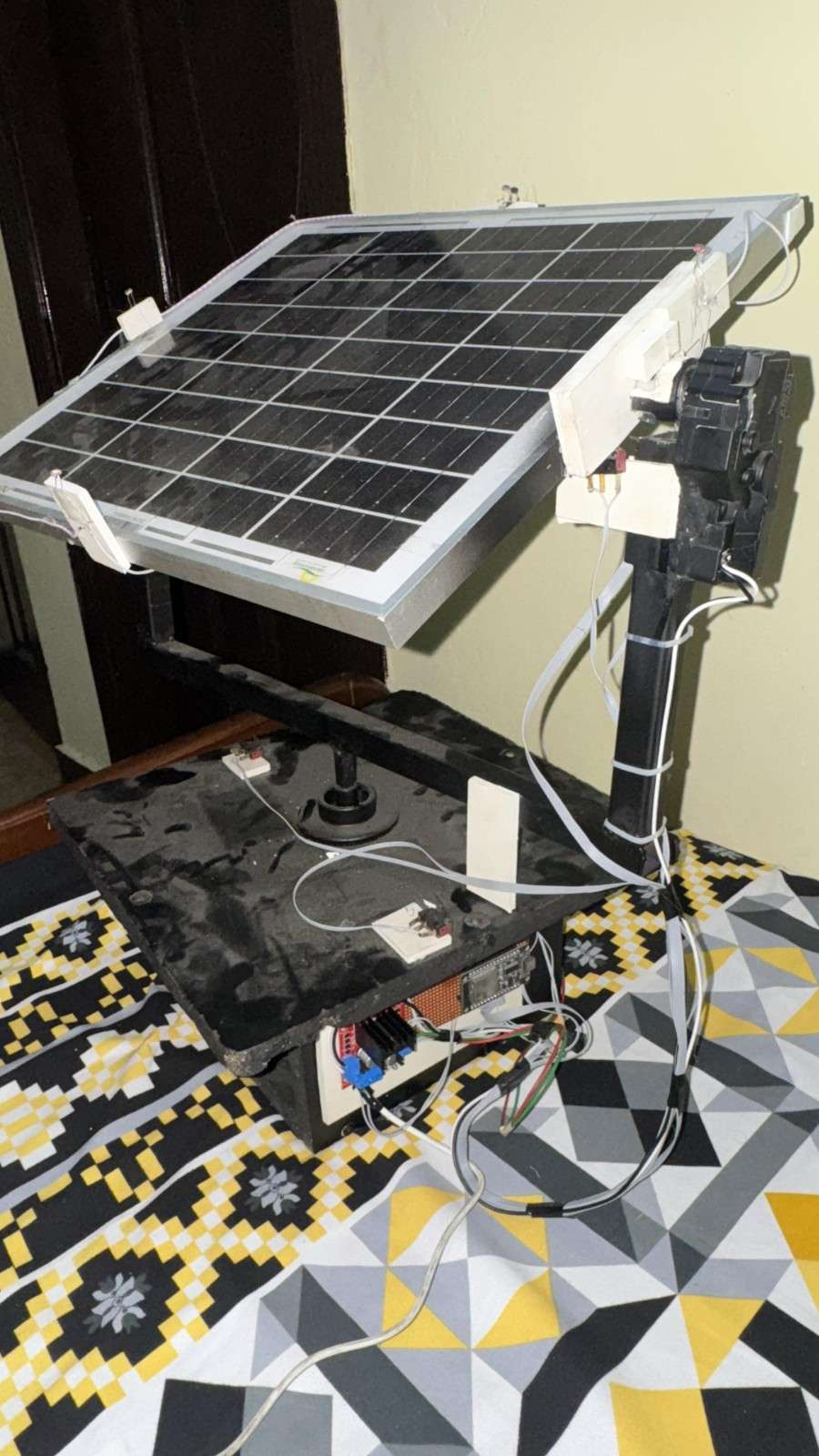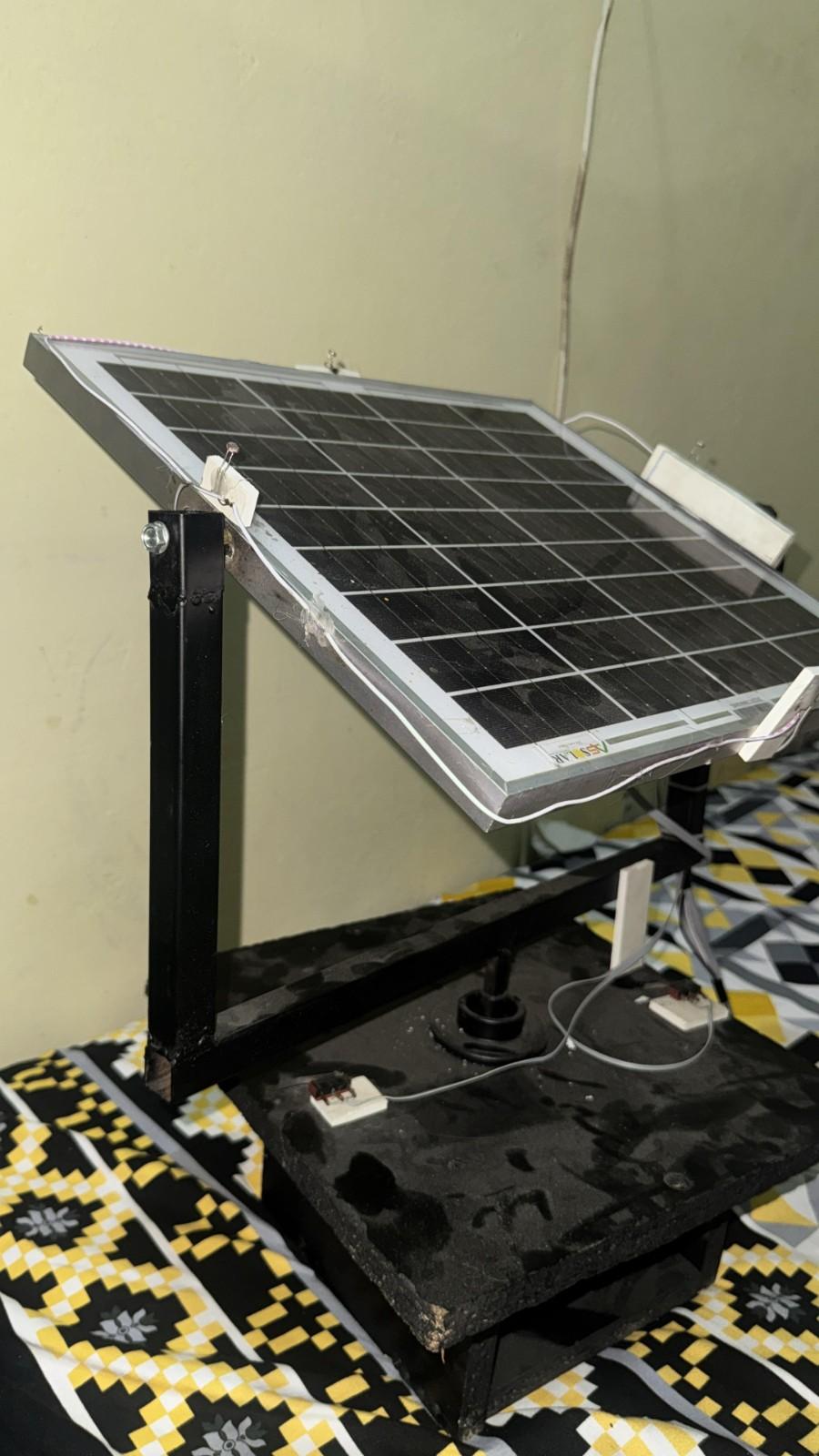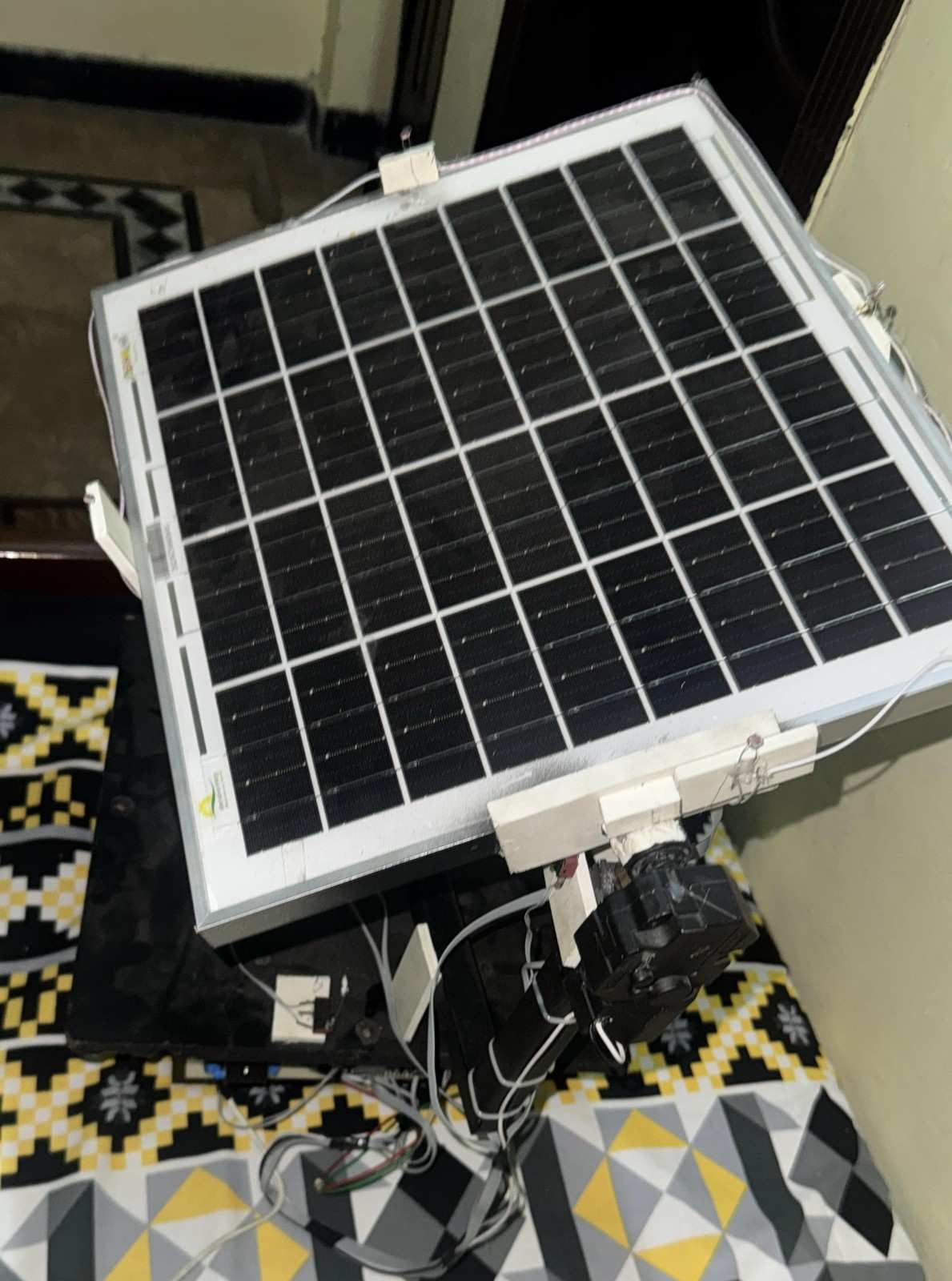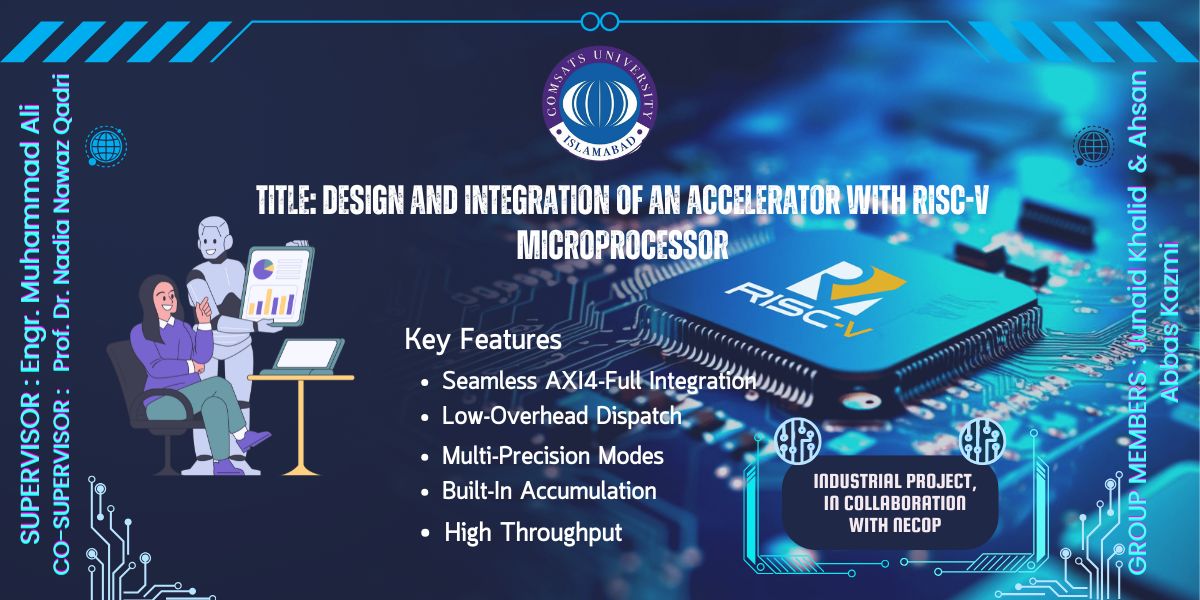Objectives
Maximize Solar Energy Collection:
Design a system that continuously aligns the solar panel perpendicular to the sun’s rays to increase energy efficiency throughout the day.
Develop a Dual-Axis Tracking Mechanism:
Build a structure that enables movement in both azimuth (horizontal) and elevation (vertical) directions for optimal sun tracking.
Implement Intelligent Tracking Using Sensors:
Use light-dependent resistors (LDRs) or similar sensors to detect the sun’s position and provide input for motor control.
Integrate Microcontroller-Based Control System:
Use a microcontroller (e.g., ESP32) to process sensor data and control the motors for accurate tracking.
Enhance System Efficiency Compared to Fixed Panels:
Compare energy output between the tracking system and a stationary solar panel to demonstrate performance improvement.
Socio-Economic Benefit
The dual-axis solar tracking system offers several socio-economic benefits that make it a valuable contribution to sustainable development. By continuously aligning solar panels to face the sun throughout the day, the system significantly improves energy capture—up to 30–40% more than fixed systems. This enhanced efficiency leads to a greater return on investment, reduced land usage, and a lower cost per unit of electricity generated. The system supports the global shift toward clean energy, reducing dependence on fossil fuels and thereby lowering greenhouse gas emissions. This contributes to a healthier environment and aligns with international climate goals.
In addition to environmental benefits, the system has strong economic and social implications. It can reduce electricity costs for households, businesses, and institutions, especially in areas with high solar exposure. The widespread adoption of such technology also creates job opportunities in design, installation, manufacturing, and maintenance, promoting skill development in renewable energy sectors.
Methodologies
The development of the dual-axis solar tracking system followed a structured methodology to ensure the effective design, implementation, and testing of the system. Initially, a detailed literature review was conducted to understand various solar tracking mechanisms, their advantages, and previous implementations. Based on this research, the dual-axis configuration was selected to maximize energy capture by allowing solar panels to track the sun both horizontally (azimuth) and vertically (elevation).
The hardware components were carefully selected to balance functionality and cost-efficiency. Light Dependent Resistors (LDRs) were used as sensors to detect sunlight intensity from different directions. These sensors provided analog inputs to an Arduino microcontroller, which was programmed to compare light levels and control two servo or stepper motors—one for horizontal movement and the other for vertical alignment. Motor drivers were used to interface the microcontroller with the actuators. A frame was designed and assembled to support the solar panel and allow free motion along both axes.
Outcome
The dual-axis solar tracking system was successfully designed, implemented, and tested, achieving its primary objective of maximizing solar energy collection by maintaining the solar panel’s orientation perpendicular to the sun throughout the day. The system effectively utilized light-dependent resistors (LDRs) to sense sunlight intensity, and the Arduino-based control algorithm accurately adjusted the panel’s position using servo motors. As a result, the tracking system demonstrated a significant increase in energy efficiency when compared to a fixed solar panel setup, confirming the effectiveness of dual-axis tracking in optimizing solar power generation.
Beyond technical functionality, the project also highlighted the feasibility of developing a cost-effective and scalable solution suitable for residential and remote-area applications. It provided hands-on experience with sensor integration, embedded system programming, mechanical design, and renewable energy principles. Additionally, the project raised awareness of sustainable energy solutions and demonstrated their potential socio-economic and environmental benefits. Overall, the system serves as a working prototype that can be further enhanced and scaled for real-world implementation in the renewable energy sector.









